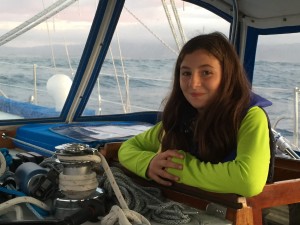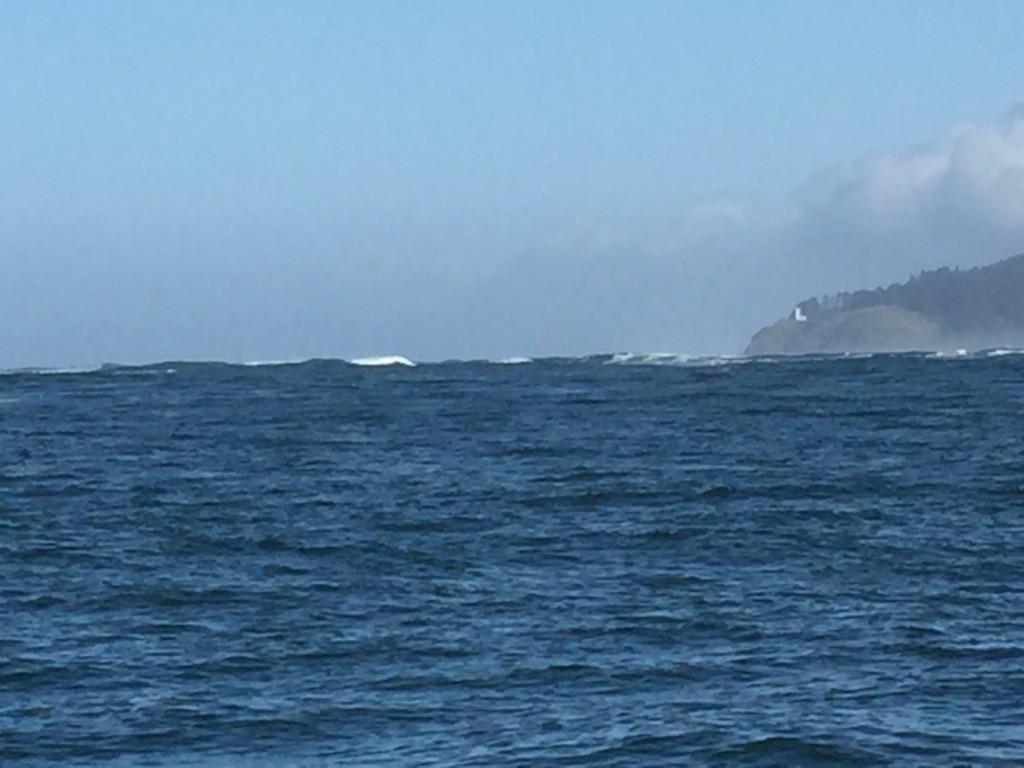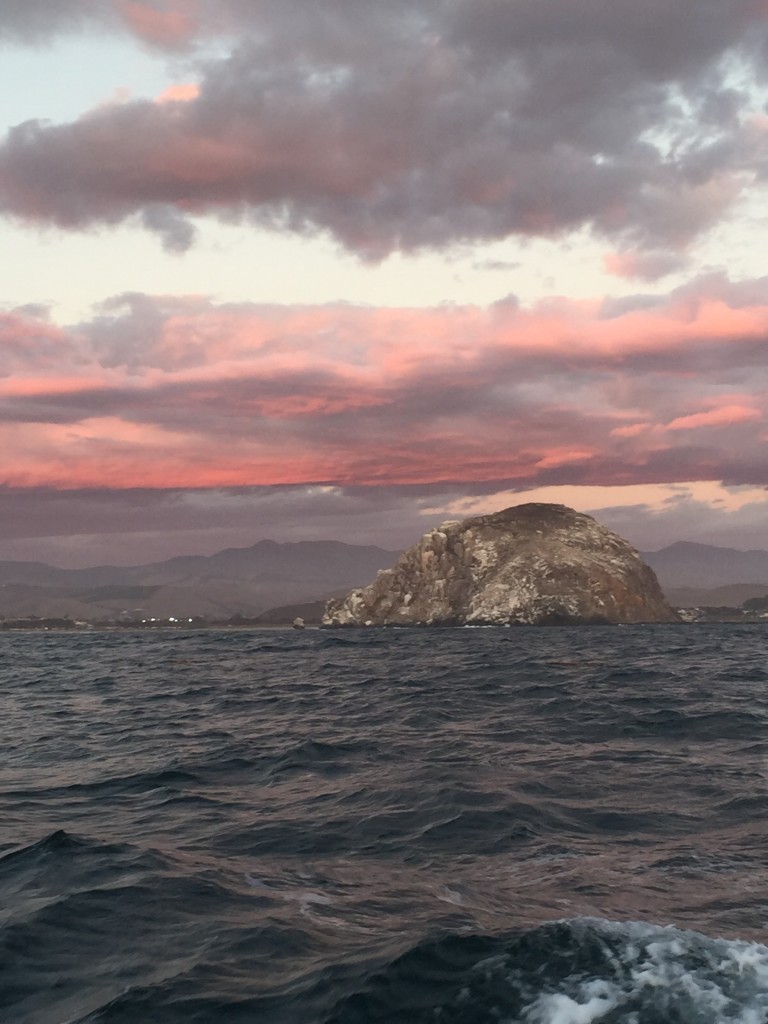I wish I could tell you that we were completely organized and ready for sea, but that would compromise my integrity. In truth, we scrambled to get ready to go. After spending all day Monday on projects and stowing, we were starved, wanting nothing more than a cold beer and a nice meal ashore with Granny. Unfortunately, it was so late we had to make several stops before finding a restaurant still open to serve us. The next scene in our comedy opens with Karen, Sean and Granny running through the grocery store grabbing anything they could before the store closed at 11:00 PM. Some might call it haphazard, but honestly, I think we picked up some efficiency points for provisioning for a 7-day passage in less than 10 minutes.
Tuesday morning dawned crisp and clear with NOAA continuing a small craft advisory for strong wind and large seas. In addition, the Coast Guard had issued a ‘Recreational 40’ restriction on the Columbia River bar, effectively closing the bar to non-commercial vessels 40ft and less. I take the Coast Guard restrictions very seriously, and Karen is a born rule-follower, but careful attention to the weather, the forecast and the current buoy reports suggested that the conditions were perfectly acceptable for us. In fact, it was a great day for sailors! We decided to go have a look for ourselves and anticipated the Coast Guard dropping the warning after the ebb, at the 10:00AM slack. At 10:28 AM we found Clatsop Spit abeam with light winds, excellent visibility and 6 – 8ft seas, confirming the buoy reports. With a confidence and certainty that still surprises me, I called the Coast Guard station and advised them that were aware of the conditions and were proceeding across the bar despite the restriction. On the surface this may come across as hubris, but I swear it was nothing of the sort. I understood the conditions, and had experienced other bar crossings in similar conditions to compare with. At the time I was certain the Coast Guard should have lifted the restriction, and in retrospect, I’m still puzzled as to why they didn’t. Nonetheless, onward we went, and with good reason, as the bar conditions proved to be benign and the ocean beyond was beautiful and blue. By mid-afternoon we were sliding Southward under nothing but blue sky and the power of our colorful spinnaker pulling us along at 5 knots with barely more than a quiet swish-swash of water sliding past the hull.
Our 6 day passage to California was mostly as planned. We spent about 75 – 80% of the time sailing, much of it under spinnaker. Despite our conservative approach, reefing down and setting up for nighttime watches before dusk, ‘things’ always happened at night. The winds would shift, the rain squalls would come, the sails would jibe and all of the ships would come out to play. I clearly remember the disoriented feeling one dark night about 50 miles outside of San Francisco Bay. We were struggling to decide if we should turn East and rest in the Bay, or continue Southward to escape the Fall weather patterns which had begun in earnest. Around 1:00AM the winds backed off and began to swirl. We needed to motor, but were low on diesel, so we left the boat to drift and swirl while we siphoned fuel out of our jerry cans into the tank. I thought of the millions of people sleeping snug in their beds while our track went in circles during that crazy, spinning hour in the darkness. It was later that night, through a radio conversation with a freighter turning across our path, that Karen discovered we were not transmitting AIS signal.
In hindsight, that swirling night was a very good time to transfer fuel because after that the weather became squally, the winds increased and the seas kicked up. The following night found us barreling down the coast in 25 kts sustained with black rain squalls chasing us down from astern. No sooner had I passed off the watch to Karen when, at 1:00AM, the winds picked up to 35kts, overwhelming the self-steering wind vane and jibing the sails. In a defensive move, we reduced sail, leaving us marginally underpowered in building seas. It was a long, uncomfortable night being slapped about and listening to hissing seas all around us.  The kids popped heads up in the morning to see us surrounded by messy, breaking 15 – 20ft seas with a very short period. It took at least an hour and a half of careful work on deck to reconfigure the sails so we could go again. But gradually we began to sail, and the faster we went the better the unpleasant surging motion became. We determined that our best bet for safe shelter would be Morro Bay, CA. Some 80 miles away, I knew we would have to light up this rocket ship in order to enter the Morro Bay harbor in daylight. For nearly 10 hours we flew before the wind, double-reefed main and both headsails out, broad reaching in 30kts. We crossed the bar into Morro Bay at 6:28PM and watched the sun splash below the horizon. Exhausted, we rolled into bed and expired.
The kids popped heads up in the morning to see us surrounded by messy, breaking 15 – 20ft seas with a very short period. It took at least an hour and a half of careful work on deck to reconfigure the sails so we could go again. But gradually we began to sail, and the faster we went the better the unpleasant surging motion became. We determined that our best bet for safe shelter would be Morro Bay, CA. Some 80 miles away, I knew we would have to light up this rocket ship in order to enter the Morro Bay harbor in daylight. For nearly 10 hours we flew before the wind, double-reefed main and both headsails out, broad reaching in 30kts. We crossed the bar into Morro Bay at 6:28PM and watched the sun splash below the horizon. Exhausted, we rolled into bed and expired.

